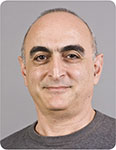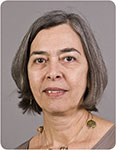Enhancement of CBM well fracturing through stimulation of cleat permeability by ultra-fine particle injection
Alireza Keshavarz A , Alexander Badalyan A , Themis Carageorgos A , Pavel Bedrikovetsky A and Ray Johnson BA University of Adelaide
B Armour Energy
The APPEA Journal 54(1) 155-166 https://doi.org/10.1071/AJ13017
Published: 2014
Abstract
Coal permeability declines due to fracture closure during the dewatering stage. A new technique for stimulation of natural coal cleats through ultra-fine and ultra-light high-strength particle injection into a coal fracture system is proposed. Coupling this technique with hydraulic fracturing treatment resulted in particles entering cleats under leak-off conditions.
The following optimal water-based coreflood experimental conditions were determined by applying Derjaguin-Landau-Verwey-Overbeek (DLVO) theory to the interaction between glass particles and the coal matrix: stability of a particle-based suspension (no agglomeration); repulsion between particles and the coal matrix; and, immobilisation of coal natural fines. At these conditions, these particles were placed inside cleats and were not attached to the cleat entrance, leading to less external cake formation; no formation damage due to fines migration was observed. The experimental study was carried out on some bituminous coal samples. Micro-sized glass particles were injected into a coal core at minimum effective stress until core permeability decreased to a value predetermined by a mathematical model. An increase of the effective stress to its maximum value by injection of particle-free water resulted in an approximate three-times increase in coal permeability, when compared to the original value.
The proposed technique can be used for stimulation of a natural fracture network in conventional and unconventional reservoirs, as well as for the enhancement of conductivity of micro-fractures around the hydraulically induced fractures. These particles can be used as a non-damaging leak-off additive during hydraulic fracturing stimulation treatments leading to long-term fracture conductivity.

Alireza Keshavarz studied petroleum engineering at the Petroleum University of Technology (PUT). He continued his studies as a postgraduate student in hydrocarbon reservoir engineering at the University of Tehran and finished his masters degree in 2007. He worked six years for the National Iranian Oil Company (NIOC) as a reservoir engineer. Alireza is presently a third year PhD candidate in petroleum engineering at the University of Adelaide. alireza.keshavarz@adelaide.edu.au |

Alexander Badalyan is a senior research associate in the Australian School of Petroleum at the University of Adelaide. His research interests include: suspension flow in porous media; characterisation of porous solids by manometric gas adsorption; application of supercritical and liquid CO2 for extraction of essential oils; dissolved gas-in-oil analysis for condition monitoring of power transformers; and thermophysical properties of gases and liquids. Badalyan is the co-author of one Australian patent and is the author/co-author of one book chapter, 24 peer-reviewed publications in international journals, 8 international conference papers and 21 conference presentations. He holds a bachelor's degree in Automatic Control from the Grozny Petroleum Institute (USSR) and a PhD Degree in Theoretical Fundamentals of Heat Engineering (Thermal Properties of Fluids) from Azerbaijan Petroleum and Chemistry Institute (USSR). alexander.badalyan@adelaide.edu.au |

Themis Carageorgos is a research fellow at the Australian School of Petroleum (ASP) of the University of Adelaide. She has a BSc in chemical engineering from Fluminense Federal University (Brazil), an MSc in mineral technology (Brazil) and a PhD in mineral resources engineering from Imperial College (UK). From 2000–7 she was an associate professor in petroleum engineering at North Fluminense State University (Brazil). Her research interests are in laboratory studies of flow in porous media and mineral processing. themis.carageorgos@adelaide.edu.au |

Pavel Bedrikovetsky is an author of two books in reservoir engineering and has published 150 technical papers in international journals and SPE. His research covers formation damage and IOR. Pavel holds a MSc in applied mathematics, a PhD in fluid mechanics, and a DSc in reservoir engineering from Moscow Oil-Gas Gubkin University. From 1991–94 Pavel was a visiting professor at Delft University of Technology and at the Imperial College of Science and Technology. Since 1994, Pavel has been a Petrobras staff consultant. Presently, Pavel holds the Chair in Petroleum Engineering at the University of Adelaide. He has served as a Section Chairman, short course instructor, key speaker and Steering Committee member at several SPE conferences. Pavel was a 2008–2009 SPE Distinguished Lecturer. pavel.bedrikovetsky@adelaide.edu.au |

Ray Johnson Jr. is presently General Manager Reservoir Development for Armour Energy in Brisbane, Queensland. He completed a BA in Chemistry and an MSc in Petroleum Engineering, and is presently a PhD candidate at the University of Queensland. Ray has 33 years experience in conventional and unconventional hydraulic fracturing design, execution and evaluation throughout Australia and North America in roles with service, consulting and operating companies. He has written several SPE papers and made numerous presentations on hydraulic fracture optimisation. Member: SPE and SPWLA. rjohnson@armourenergy.com.au |


